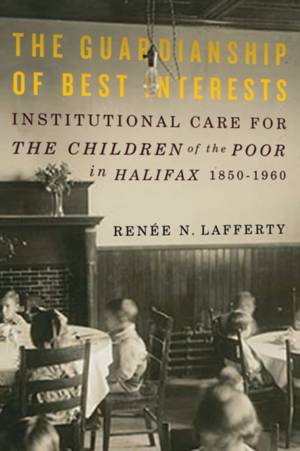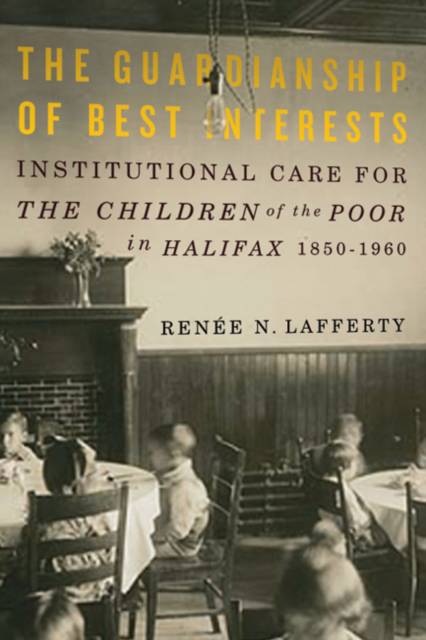
- Afhalen na 1 uur in een winkel met voorraad
- Gratis thuislevering in België vanaf € 30
- Ruim aanbod met 7 miljoen producten
- Afhalen na 1 uur in een winkel met voorraad
- Gratis thuislevering in België vanaf € 30
- Ruim aanbod met 7 miljoen producten
Zoeken
The Guardianship of Best Interests, Volume 2
Institutional Care for the Children of the Poor in Halifax, 1850-1960
Renée N Lafferty
€ 172,45
+ 344 punten
Omschrijving
It is difficult to imagine how orphan asylums and children's homes - often depicted as places where abuse, deprivation, and cruelty were commonplace - once presented a viable solution to child neglect. Renée N. Lafferty examines this response as it played out in Halifax, demonstrating how these homes reacted both creatively and valiantly to their environment, despite chronic underfunding and a narrow vision of the possibilities available to disadvantaged children. The Guardianship of Best Interests traces the creation and administration of children's homes in Halifax from the mid-nineteenth century to their closure in the mid-twentieth. Against the backdrop of a city torn apart by race and religious politics, financial challenges, two world wars, and the devastating explosion of 1917, Halifax institutions frequently represented themselves as the cutting edge of professional child welfare methods. Placing their histories at the core of this study, Lafferty challenges the common assertion that such homes were readily abandoned in favour of the foster care method promoted by the Children's Aid Society. Through the unique perspective gained by considering inter-denominational competition, along with the effects of racism and the political posturing of the province's emerging welfare bureaucracy, The Guardianship of Best Interests unearths the significant similarities between past child welfare practices and our current approaches toward neglect and dependency.
Specificaties
Betrokkenen
- Auteur(s):
- Uitgeverij:
Inhoud
- Aantal bladzijden:
- 400
- Taal:
- Engels
- Reeks:
- Reeksnummer:
- nr. 2
Eigenschappen
- Productcode (EAN):
- 9780773540552
- Verschijningsdatum:
- 17/01/2013
- Uitvoering:
- Hardcover
- Formaat:
- Genaaid
- Afmetingen:
- 163 mm x 226 mm
- Gewicht:
- 725 g

Alleen bij Standaard Boekhandel
+ 344 punten op je klantenkaart van Standaard Boekhandel
Beoordelingen
We publiceren alleen reviews die voldoen aan de voorwaarden voor reviews. Bekijk onze voorwaarden voor reviews.








